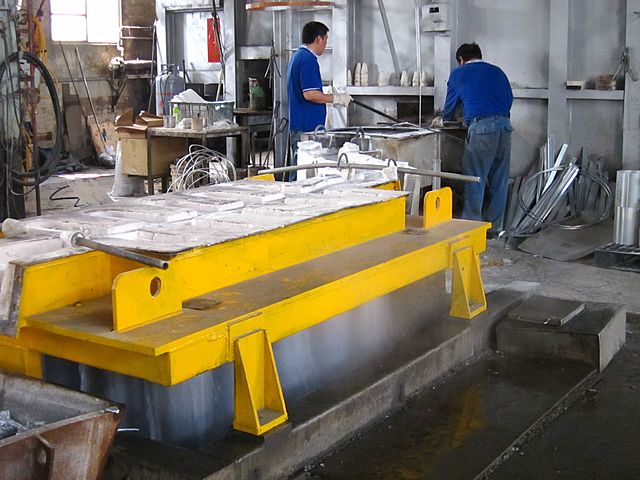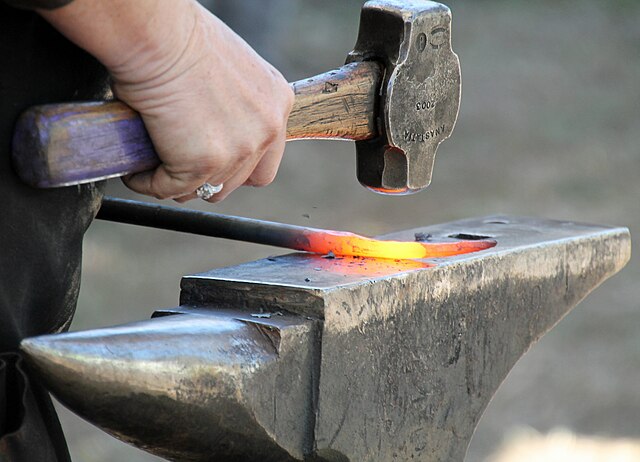Continuous casting, also called strand casting, is the process whereby molten metal is solidified into a "semifinished" billet, bloom, or slab for subsequent rolling in the finishing mills. Prior to the introduction of continuous casting in the 1950s, steel was poured into stationary molds to form ingots. Since then, "continuous casting" has evolved to achieve improved yield, quality, productivity and cost efficiency. It allows lower-cost production of metal sections with better quality, due to the inherently lower costs of continuous, standardised production of a product, as well as providing increased control over the process through automation. This process is used most frequently to cast steel. Aluminium and copper are also continuously cast.
The macrostructure of continuously cast copper (99.95% pure), etched, ∅ ≈ 83 mm.
Sketch of thin strip casting plant.
continuous hot vertical casting in process (aluminum)
molten aluminum pours into this casting die (top view of die)
Steel is an alloy of iron and carbon with improved strength and fracture resistance compared to other forms of iron. Because of its high tensile strength and low cost, steel is one of the most commonly manufactured materials in the world. Steel is used in buildings, as concrete reinforcing rods, in bridges, infrastructure, tools, ships, trains, cars, bicycles, machines, electrical appliances, furniture, and weapons.
The steel cable of a colliery winding tower
An incandescent steel workpiece in a blacksmith's art
Iron ore pellets used in the production of steel
A Bessemer converter in Sheffield, England








